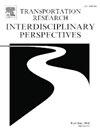Is human-like decision making explainable? Towards an explainable artificial intelligence for autonomous vehicles
IF 3.9
Q2 TRANSPORTATION
Transportation Research Interdisciplinary Perspectives
Pub Date : 2025-01-01
DOI:10.1016/j.trip.2024.101278
引用次数: 0
Abstract
To achieve trustworthy human-like decisions for autonomous vehicles (AVs), this paper proposes a new explainable framework for personalized human-like driving intention analysis. In the first stage, we adopt a spectral clustering method for driving style characterization, and introduce a misclassification cost matrix to describe different driving needs. Based on the parallelism in the complex neural network of human brain, we construct a Width Human-like neural network (WNN) model for personalized cognitive and human-like driving intention decision making. In the second stage, we draw inspiration from the field of brain-like trusted AI to construct a robust, in-depth, and unbiased evaluation and interpretability framework involving three dimensions: Permutation Importance (PI) analysis, Partial Dependence Plot (PDP) analysis, and model complexity analysis. An empirical investigation using real driving trajectory data from Kunming, China, confirms the ability of our approach to predict potential driving decisions with high accuracy while providing the rationale implicit AV decisions. These findings have the potential to inform ongoing research on brain-like neural learning and could function as a catalyst for developing swifter and more potent algorithmic solutions in the realm of intelligent transportation.
求助全文
约1分钟内获得全文
求助全文
来源期刊

Transportation Research Interdisciplinary Perspectives
Engineering-Automotive Engineering
CiteScore
12.90
自引率
0.00%
发文量
185
审稿时长
22 weeks
 求助内容:
求助内容: 应助结果提醒方式:
应助结果提醒方式:


